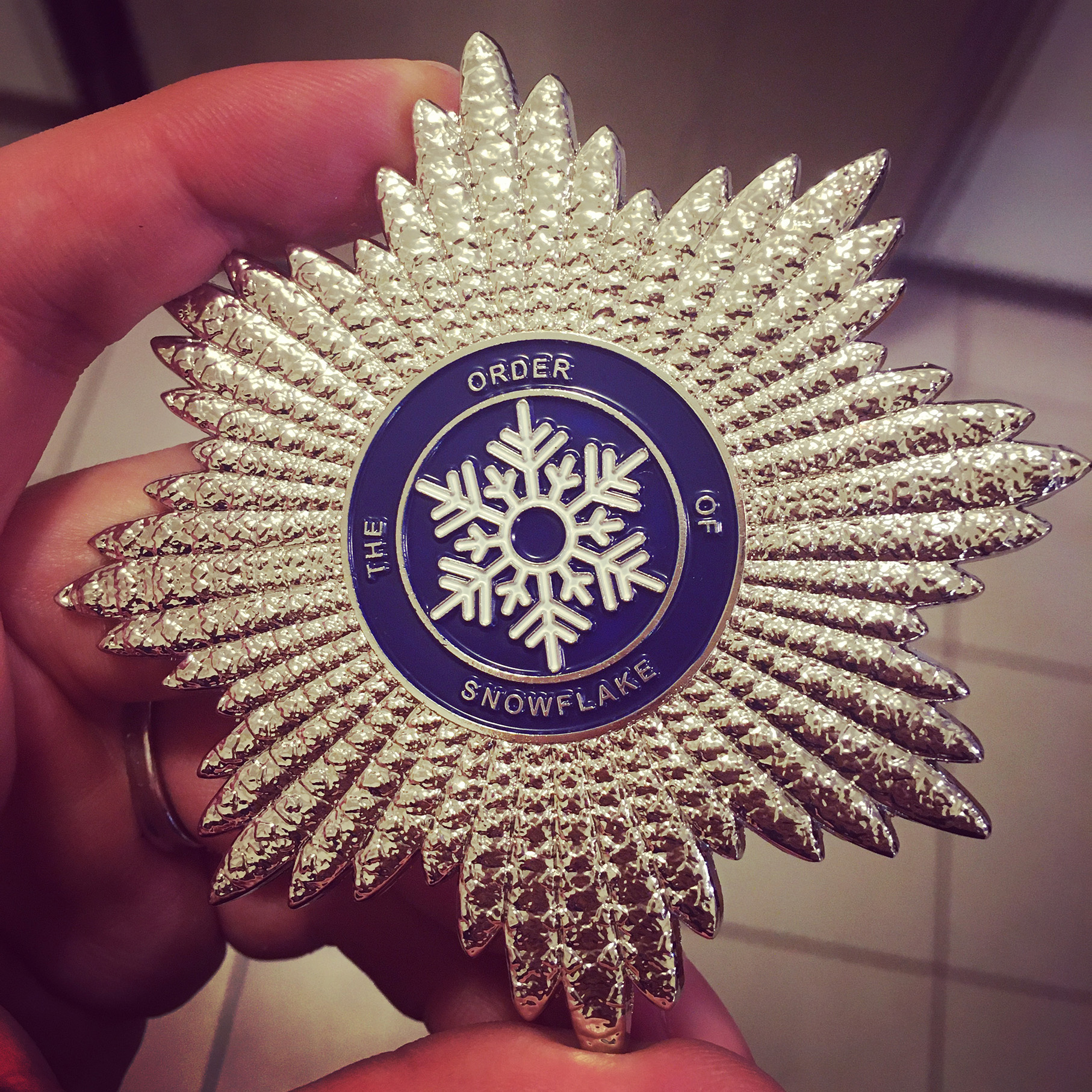Difference between revisions of "Template:Westarctica.wiki:Today's featured article"
Westarctica (talk | contribs) |
Westarctica (talk | contribs) |
||
| (183 intermediate revisions by the same user not shown) | |||
| Line 1: | Line 1: | ||
[[File: | [[File:Order of the Snowflake Star.jpg|250px|left]] | ||
The '''[[ | The '''[[Order of the Snowflake]]''' is the second highest [[Orders of Westarctica|Order of Westarctica]]. The intention of the order is to honor those who have provided a service to [[Westarctica]]. It was created in January 2015. Only the [[Grand Duke of Westarctica|Grand Duke]] himself has the power to bestow new knighthoods and thus far, he has awarded the medal to foreign dignitaries, artists, prominent nobles, and other supporters of Westarctica. All knights and dames receive the regalia of the class being bestowed; the Order of the Snowflake is always awarded for life. Membership entitles the bearer to attach the post-nomial "KtS" ("Knight of the Snowflake") or "DtS" ("Dame of the Snowflake") following their name in correspondence and other forms of written address (business cards, place settings, calling cards, etc.). | ||
The | The highest grade, that of Knight Grand Cross, is reserved for Heads of State and members of the [[Royal Family of Westarctica|Royal Family]]. It remains the most rarely awarded class. The regalia for this class consists of a silver breast star with over 100 Austrian rhinestone crystals. In the center of the star is a snowflake symbol encased in glass. | ||
'''([[Order of the Snowflake|Full Article...]])''' | |||
'''([[ | |||
Latest revision as of 06:23, 21 June 2025
The Order of the Snowflake is the second highest Order of Westarctica. The intention of the order is to honor those who have provided a service to Westarctica. It was created in January 2015. Only the Grand Duke himself has the power to bestow new knighthoods and thus far, he has awarded the medal to foreign dignitaries, artists, prominent nobles, and other supporters of Westarctica. All knights and dames receive the regalia of the class being bestowed; the Order of the Snowflake is always awarded for life. Membership entitles the bearer to attach the post-nomial "KtS" ("Knight of the Snowflake") or "DtS" ("Dame of the Snowflake") following their name in correspondence and other forms of written address (business cards, place settings, calling cards, etc.).
The highest grade, that of Knight Grand Cross, is reserved for Heads of State and members of the Royal Family. It remains the most rarely awarded class. The regalia for this class consists of a silver breast star with over 100 Austrian rhinestone crystals. In the center of the star is a snowflake symbol encased in glass.
